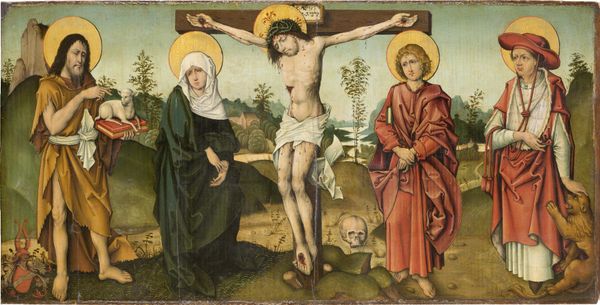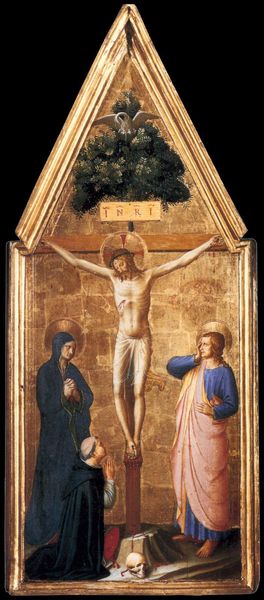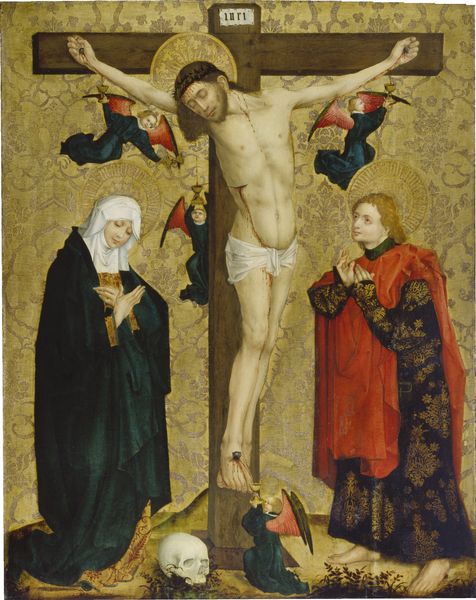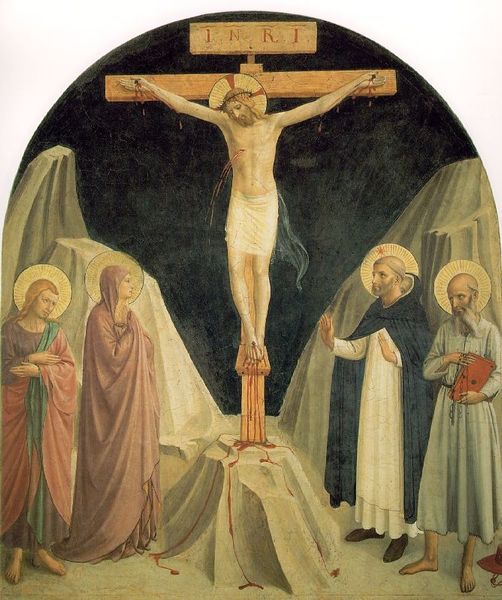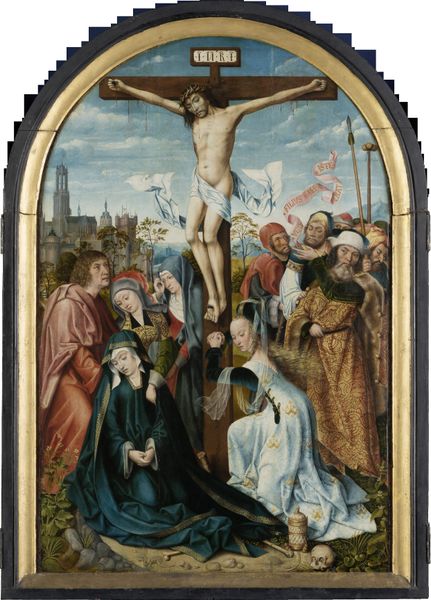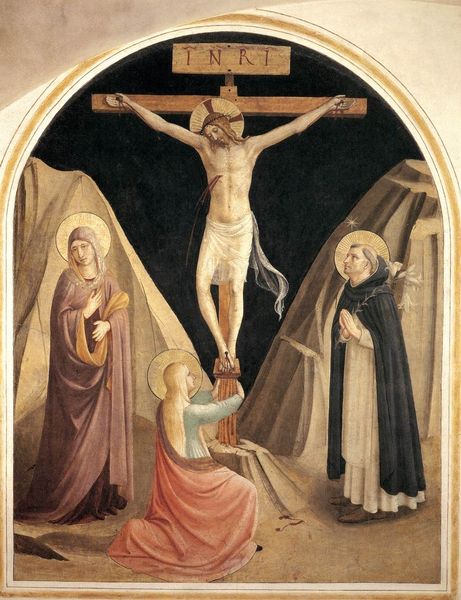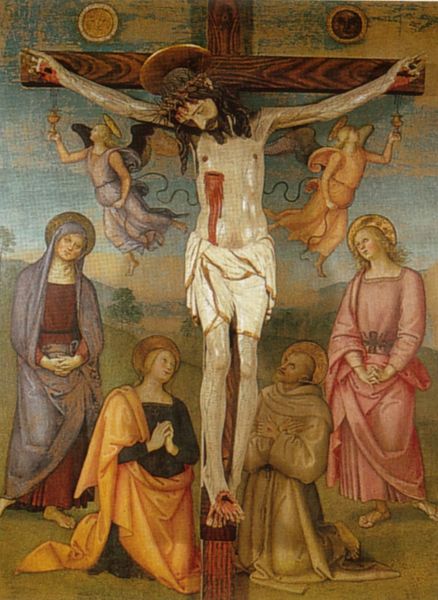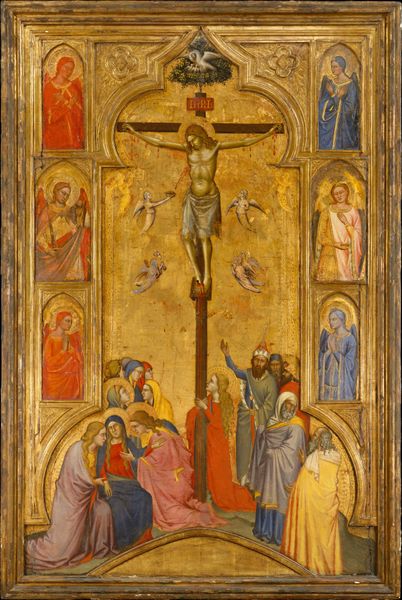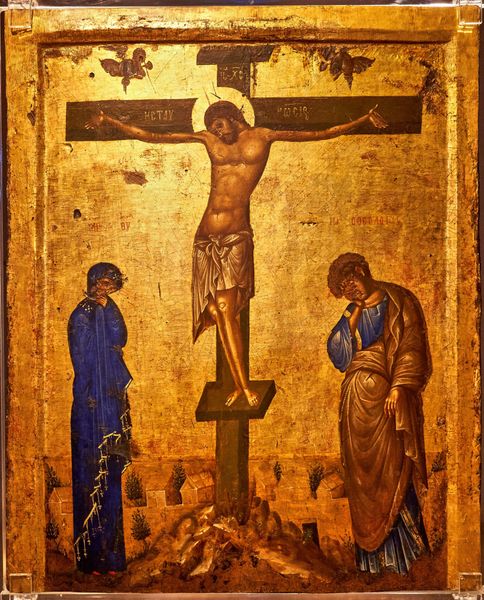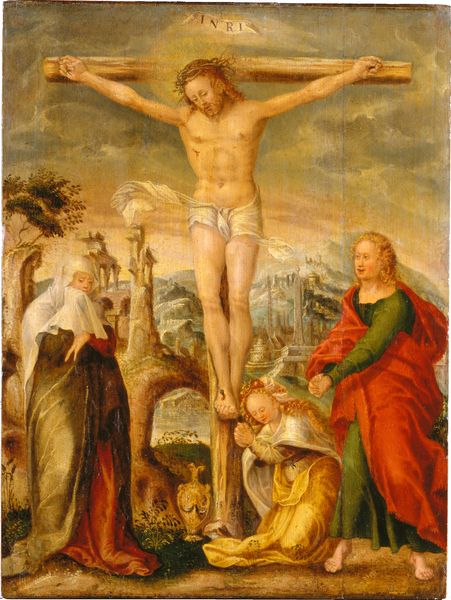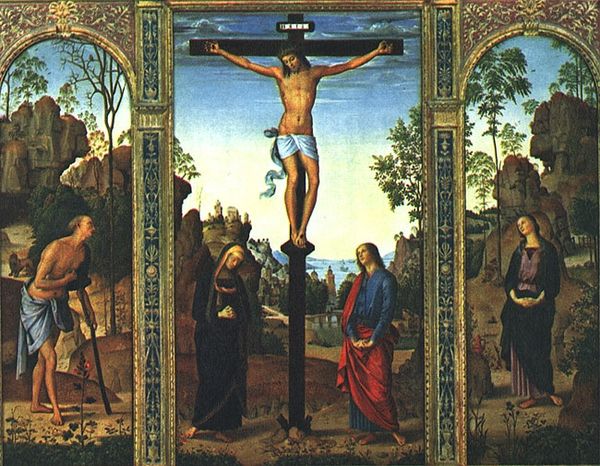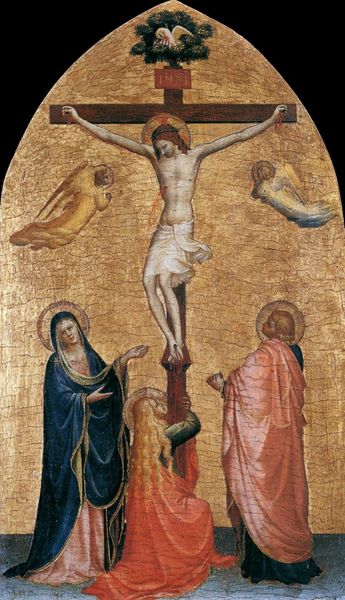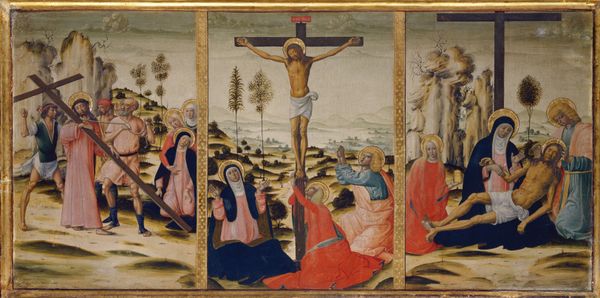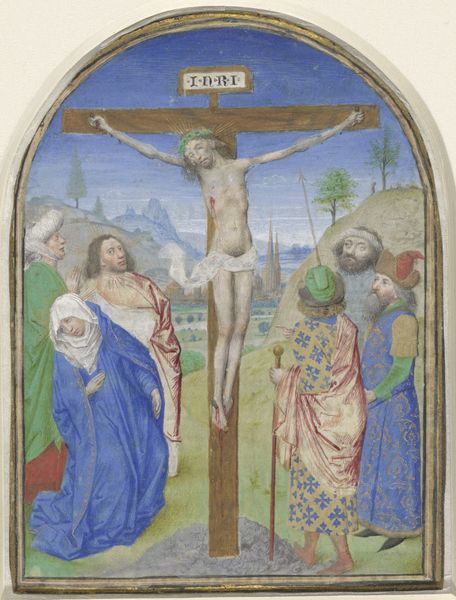
panel, painting, oil-paint
#
portrait
#
panel
#
painting
#
oil-paint
#
figuration
#
oil painting
#
history-painting
#
italian-renaissance
#
italy
#
early-renaissance
Dimensions: 75 × 55.2 cm (29 1/2 × 21 3/4 in.); image (arched): 74 × 55.2 cm (29 1/8 × 21 3/4 in.)
Copyright: Public Domain
Carlo Crivelli's "The Crucifixion," painted around 1485, presents a stark image of Christ's final moments. The skull at the foot of the cross is not merely a symbol of death. It is Adam's skull, signifying humanity's fall and Christ's redemptive sacrifice. This motif echoes through art history, appearing in countless crucifixion scenes. Consider how the skull appears in later works, such as Golgotha, in which we can observe a more dramatic and visceral depiction of the scene. This symbol has evolved, carrying with it centuries of religious and cultural weight, each artist layering their interpretation onto this potent image. The emotional gravity of the scene is palpable. The sorrowful figures of Mary and John evoke empathy, engaging viewers on a deep, subconscious level. The skull, the cross, the weeping figures—these are not static symbols but rather points of convergence, drawing together threads of human suffering, sacrifice, and redemption across time. These symbols resurface, evolve, and take on new meanings, reflecting the ever-changing landscape of human consciousness.
Comments
No comments
Be the first to comment and join the conversation on the ultimate creative platform.
